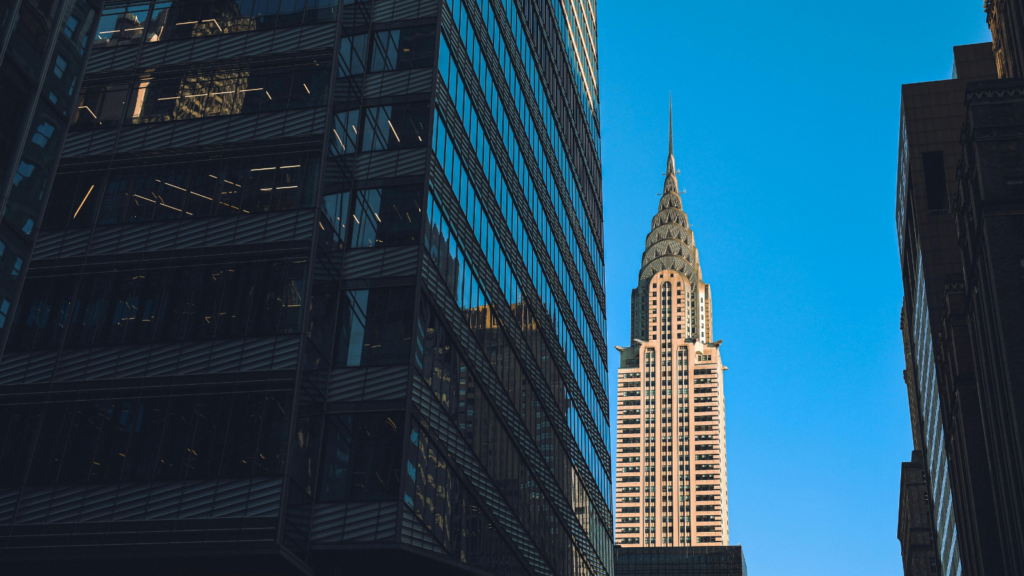Art Deco, a captivating architectural style of the early 20th century, has left an indelible mark on the world’s cityscapes. Its unique blend of bold geometric forms, rich colors, and lavish ornamentation has given birth to some of the most iconic structures globally. This article is set to explore the famous Art Deco buildings that have stood the test of time, embodying the spirit and elegance of an era gone by.
From the soaring spires of the Chrysler Building to the sun-kissed façade of Miami’s Delano Hotel, these architectural marvels continue to captivate and inspire. They’re not just buildings; they’re monumental testaments to human creativity and innovation. So, let’s embark on this architectural journey, appreciating the grandeur and charm of these Art Deco masterpieces.
Famous Art Deco Buildings

Digging into the portfolio of famous Art Deco buildings, it’s clear that intricate detailing and futuristic elegance define the genre. Two key examples—the Empire State Building in New York and the Palais de Tokyo in Paris—highlight the distinct and captivating designs inherent to this style. In London, they’ve got the Daily Express Building, showcasing bold, streamlined, virtually metallic architectural aesthetic unique to this pivotal period. The San Francisco’s Golden Gate Bridge, albeit an evolution of the style, exhibits Art Deco’s influence with its magnificent tower designs. Each of these structures underscores the enduring appeal of Art Deco, with bold designs that are as relevant today as they were in the 1920s and 30s.
Landmark Art Deco Buildings in the United States

Embodying the glitz, glamor, and forward-thinking spirit of the Roaring Twenties, a number of famous Art Deco buildings define the architectural landscape of the United States. A showcase of this unique style, they captivate with their flair for geometric patterns, ornate detailing, and opulent finishes. Here, witness the splendor of noted American landmarks such as the iconic Chrysler Building in New York, the resplendent Fisher Building in Detroit, and the historic Delano Hotel in Miami. Each building presents a testament to the enduring appeal of Art Deco, prominently illuminating the style’s influence on modern urban cityscapes.
Art Deco Beyond the U.S.
Art Deco’s architectural wonders aren’t confined to U.S. borders. Many famous Art Deco buildings mark the skyline worldwide, reflecting the aesthetic’s global appeal. From Europe to Asia, Art Deco’s trademark characteristics – bold geometric designs, luxurious accents, and dazzling colors – grace cityscapes, presenting a timeless testament to this design movement’s far-reaching influence. Let’s delve into some of these spectacular structures serving as Art Deco exemplars in varied regions around the globe, mirroring the style’s ability to transcend cultural and geographic differences while establishing a unique visual identity. The journey maps buildings like the Kavanagh Building in Buenos Aires, the Palais Stoclet in Brussels, and the Eritrea’s Fiat Tagliero Building, each narrating an engaging chapter in Art Deco’s illustrious architectural legacy.
Preserving Art Deco Heritage

As famous Art Deco buildings age, preserving their discourse lies in their structural integrity and original aesthetics. Protecting their historical context not only encapsulates an era’s heart and soul but also stands as a testament to architectural arts. Be it the Chrysler Building in New York or the Palais de Tokyo in Paris, globally spread Art Deco marvels face preservation challenges: weather impacts, urban development pressures, and the lack of knowledge about their cultural values. These factors, if overlooked, pose a threat to their existence.
Art Deco and Its Impact on Architecture
Art Deco buildings, with their bold geometry and lavish detailing, have left an indelible mark on global architecture. Structures like the Chrysler Building and the Palais de Tokyo stand as testaments to this timeless style. Yet, it’s important to remember that these architectural marvels aren’t just aesthetically pleasing—they’re also cultural artifacts that need preservation. As they age, they face threats from weathering and urban development. However, with strategic planning and public engagement, it’s possible to safeguard these iconic structures. By doing so, we’re not just preserving buildings; we’re preserving a unique legacy of architectural diversity, cultural understanding, and urban aesthetic.
